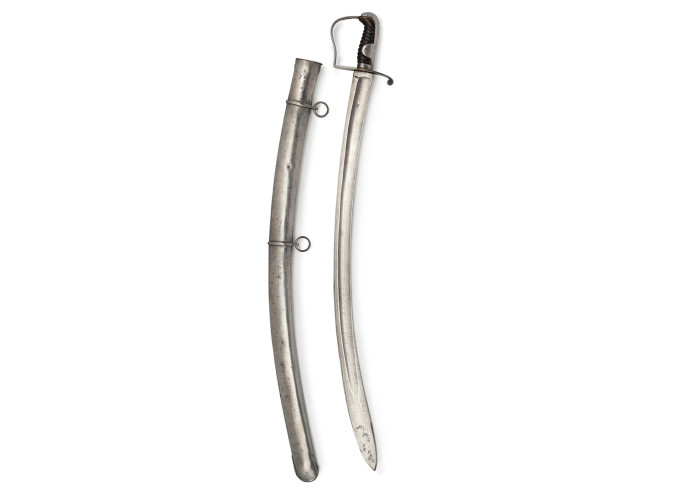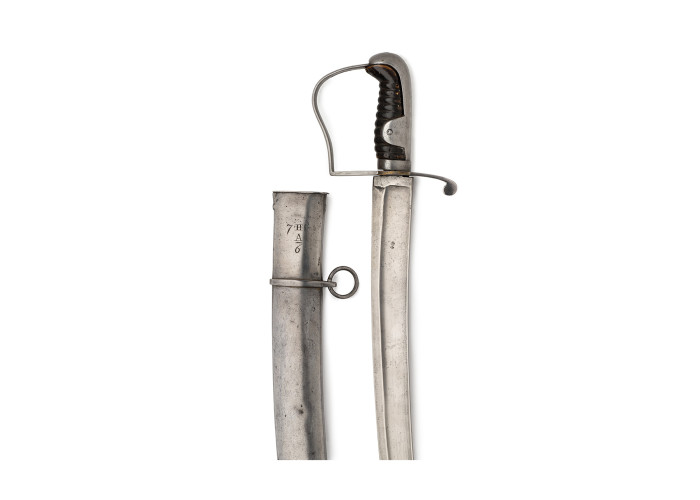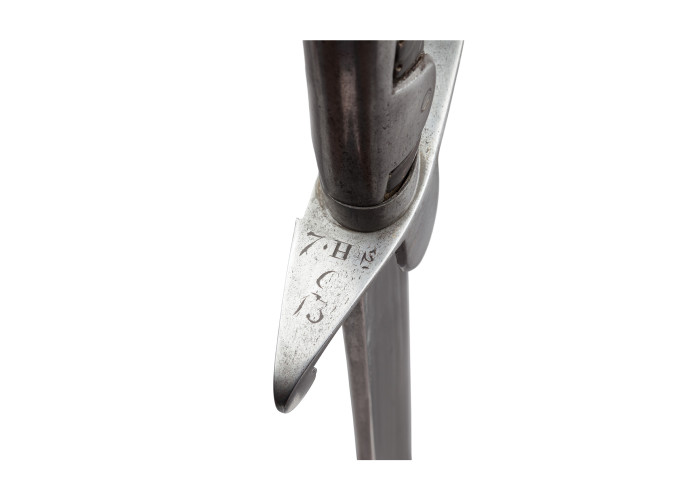British Light Cavalry Sword
This is the sword carried at the Battle of Waterloo by ordinary soldiers (other ranks) in any of the regiments of light dragoons and hussars. These were light cavalry soldiers in the British Army.
Their job was to find out where the enemy was, give warning if enemy soldiers were coming, attack the enemy’s supplies and harass enemy troops who were running away. Their purpose was completely different from the heavy cavalry, who would attack the enemy and break up units by either killing them or forcing them to flee.
The sword and scabbard are made of steel. The handle is wood covered with leather and steel wire. This gave the soldier a better grip if his hand was sweaty or covered in blood. The scabbard kept the sharp blade safe until the soldier took the sword out to use it. The sword was used to slash and was not much use for thrusting because it was too curved. However, when the cavalry charged they would aim the points of their swords at the enemy’s faces and turn their arms so that their hands were upside down. This made the sword and the soldier’s arm very rigid so that it could withstand the impact of colliding with the enemy.
The hilt is very simple and just has a plain iron bar to protect the soldier’s knuckles. It reminded people of the footrest on a saddle and so it became known as a “stirrup-hilt”.
The 1796 Light Cavalry Pattern sword was designed by Colonel John Gaspard Le Marchant (1766–1812). He was a cavalry officer who introduced a series of reforms of the cavalry as a result of his experiences of fighting in Flanders between 1793 and 1795. He was friendly with King George III who personally approved the adoption of his sword for all light cavalry regiments. It is said that the King had learnt all the positions, called guards, cuts and parries, from Le Marchant’s drill book. The Royal Horse Artillery also carried this sword for defence if their cannons were attacked.
Le Marchant was made a major general and was killed leading the 4th (Queen’s Own) Regiment of Dragoons and the 4th (Royal Irish) and 5th (Princess Charlotte of Wales’s) Regiments of Dragoon Guards at the Battle of Salamanca on 22 July 1812. The Duke of Wellington mourned his death, as he had lost one of his best cavalry officers.
His design was so good that the Prussians copied it for their own use in 1811 and German soldiers were still using it during World War One in 1914.
-
Education overview
Discover the life of an cavalry soldier in the Waterloo 200 Schools E-Book. The Hermitage Academy have researched Lieutenant William Beckwith of the 16th Light Dragoons and created a tribute to his service. To find out how to sign up your class and discover your local Waterloo history, contact [email protected].
-
Curatorial info
- Originating Museum: Queen's Own Hussars Museum
- Material: Steel, brass
-
Use this image
You can download and use the high resolution image under a Commercial Commons licence, for all non-commercial purposes, provided you attribute the copyright holder.
- Rights Holder: Queen's Own Hussar's Regimental Museum. Photography Relic Imaging Ltd.
- License Type: Creative Commons
Find it here
This object is in the collection of Queen’s Own Hussars Regimental Museum












